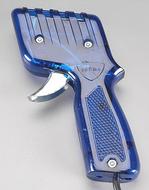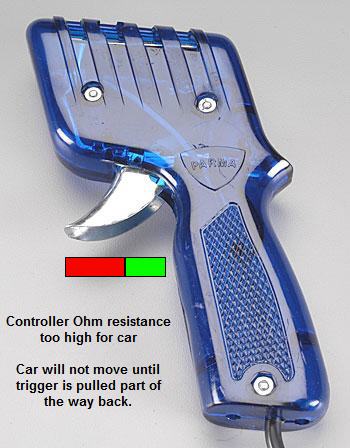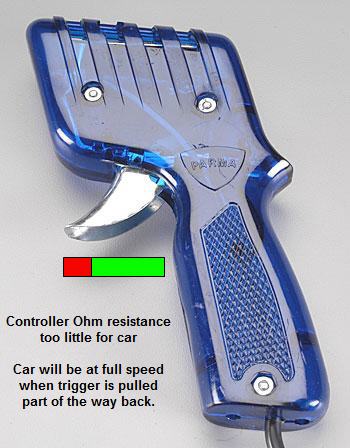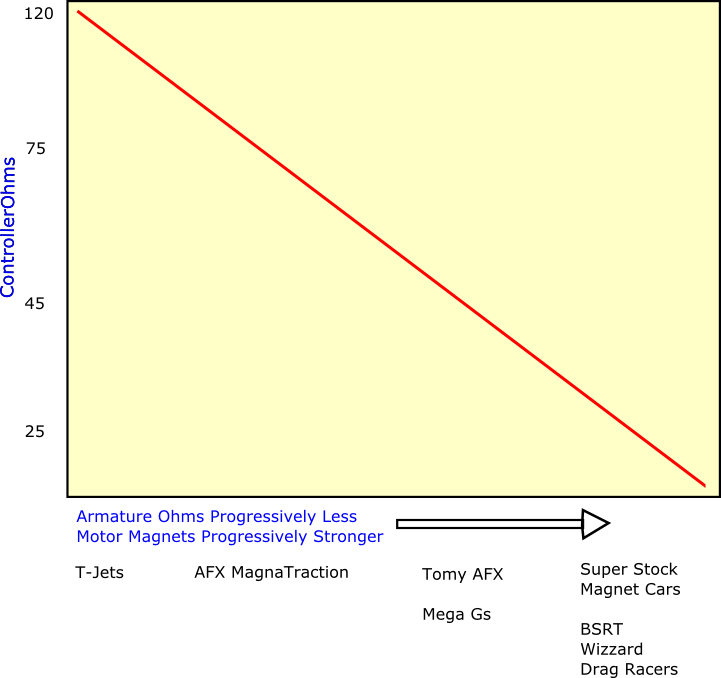
The correct choice in controllers can make a real difference in the outcome of your slot car racing and your overall racing experience. If your controller is not matched with your car it is much like walking in a pair of shoes that do not fit your feet. You will get there, but it will not be enjoyable.
The controllers made now are of the trigger type. When the trigger is completely released or in the off position the car will not receive current to the motor. When the trigger is squeezed the car receives more and more current to the motor which in turn makes the car go faster on the track. Controllers use resistance to control the current flowing to the motor much like a dimmer switch that controls a light in your home.
When the controller is matched with the car you will have the full range of trigger travel to control the car's speed. If your controller has too much resistance for the car, you will have to pull the trigger part of the way back before the car even moves. On the other hand if your controller has too little resistance for the car, the car will be at full speed when the trigger is only pulled part of the way back. Either way trigger travel is reduced and so is the ability to control the cars speed.
When the controller is matched with the car you will have the full range of trigger travel to control the car's speed. If your controller has too much resistance for the car, you will have to pull the trigger part of the way back before the car even moves. On the other hand if your controller has too little resistance for the car, the car will be at full speed when the trigger is only pulled part of the way back. Either way trigger travel is reduced and so is the ability to control the cars speed.
Controllers are measured in resistance values or Ohms. The general guideline in determining your needs will be determined by the armature and motor magnets. The hotter the armature and the stronger the motor magnets will lower the ohms of the controller you will need.



 RSS Feed
RSS Feed